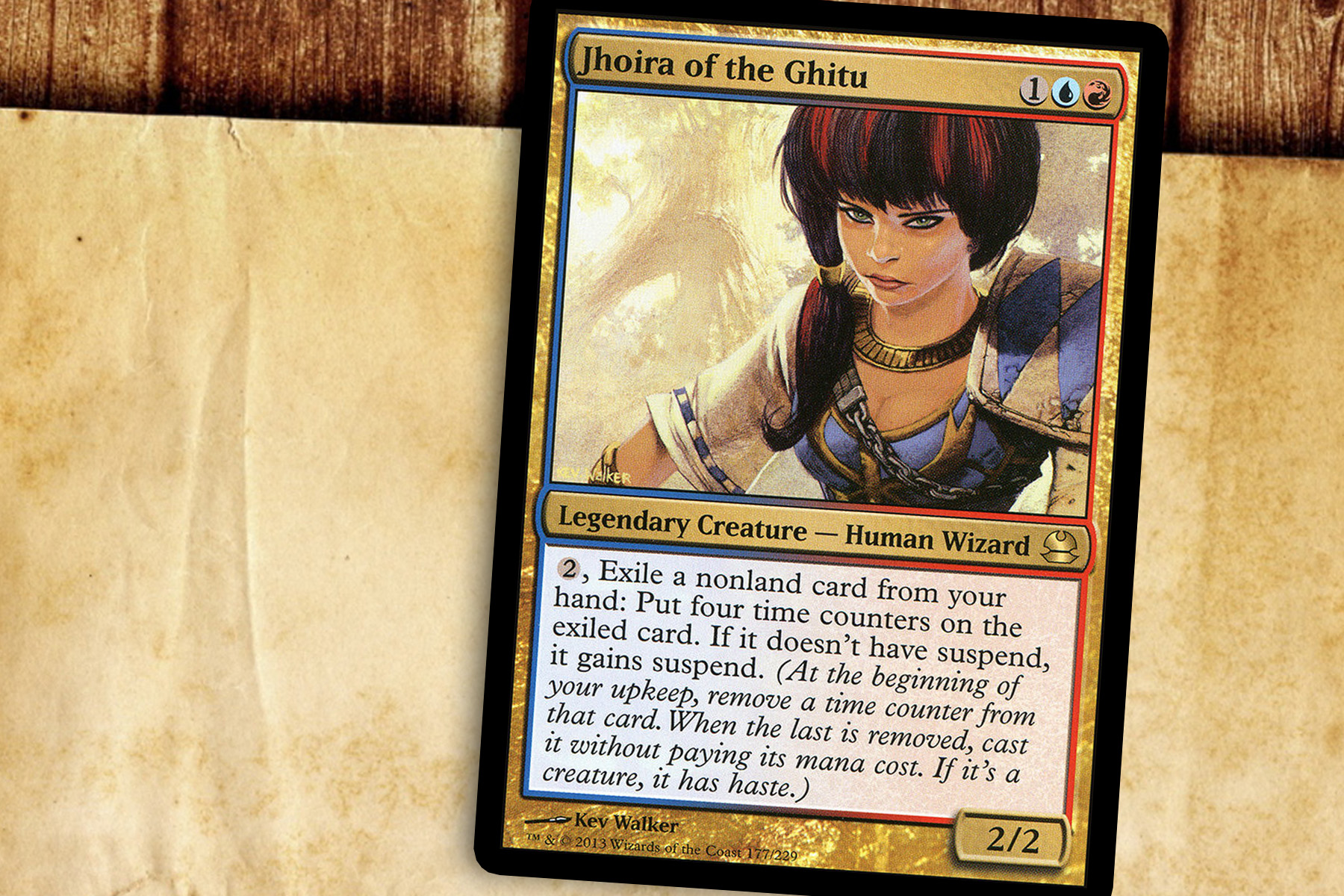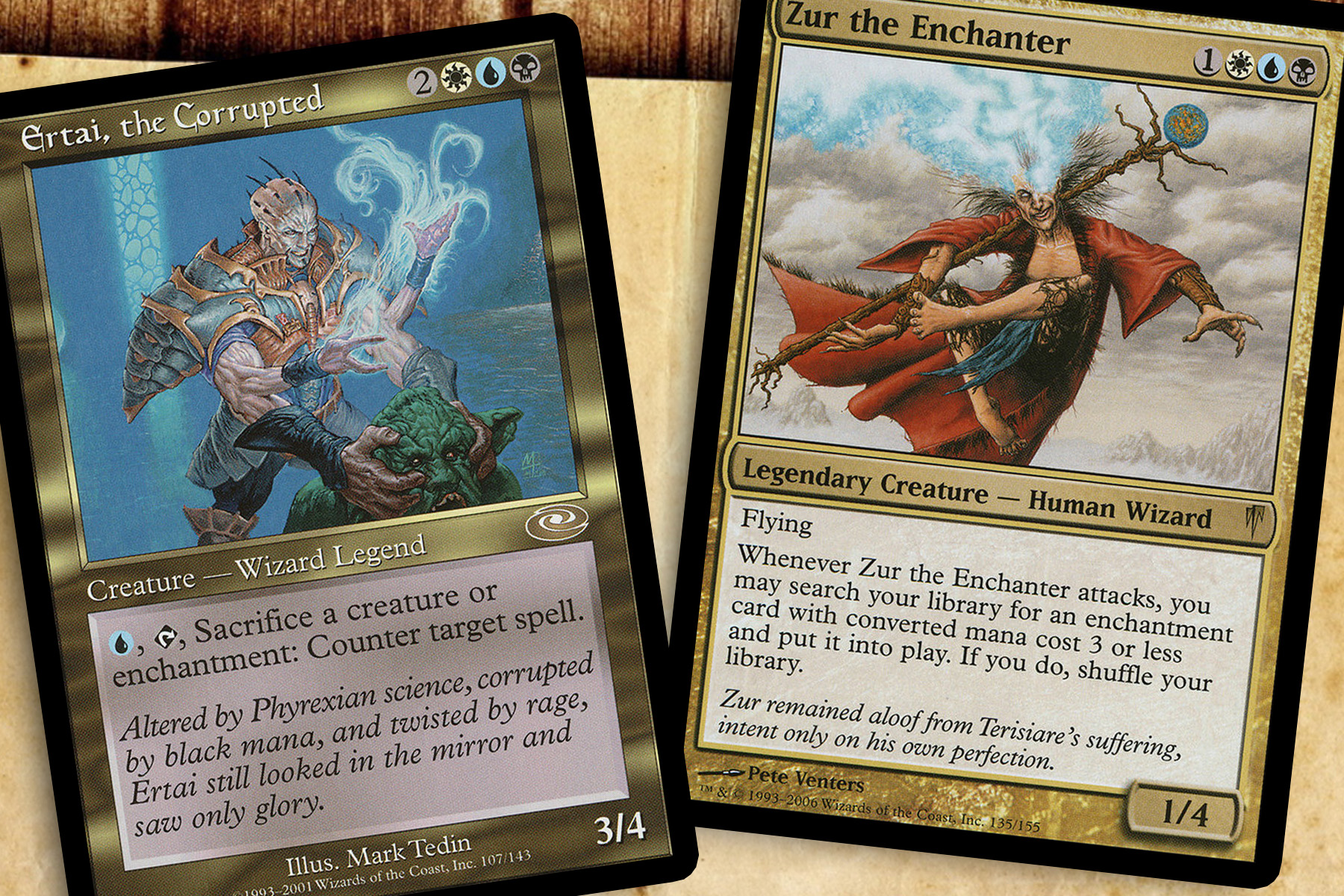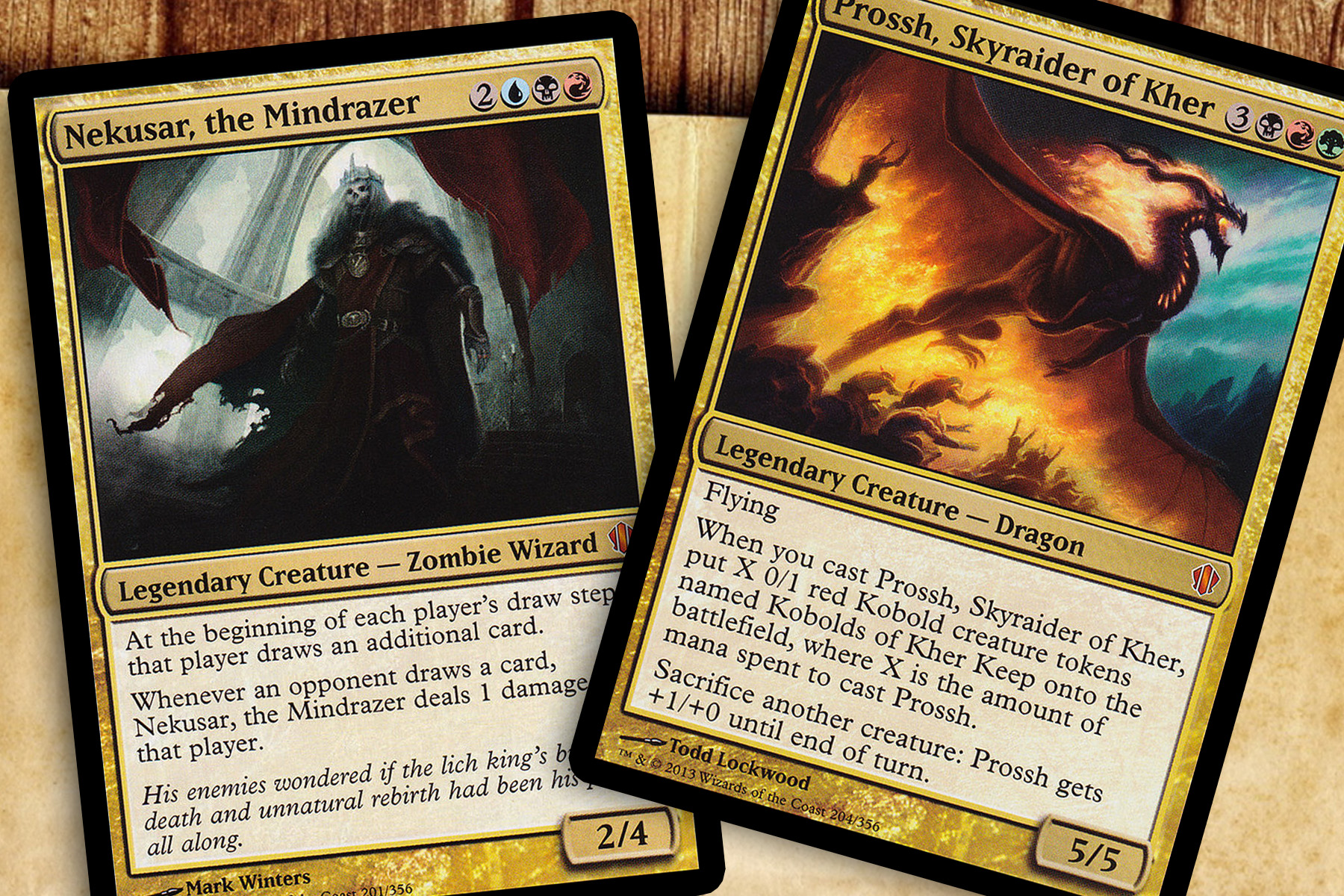“How did it get this bad?” you think to yourself as you come out of the haze you’ve worked yourself into.
Just thirty minutes ago you were shuffling your first deck ever constructed from scratch at a table in your local game store. Now you’re staring down twenty 2/2 flying Drake tokens and all your removal has been counterspelled. The only thing keeping you alive is your Lightmine Field, but deep down you kind of want the Talrand player to find Into the Roil so the game can end and you can go play at another table.
“Is this what Commander is like here?” you think to yourself again.
You weren’t prepared for this. Last week wasn’t like this.
A few minutes later a Toxic Deluge resolves after a pretty lengthy counter war ending with Mindbreak Trap. The game has leveled out again.
“Nekusar, the Mindrazer,” the Deluge player proclaims.
Here we go again.
Hello all, good to see you’ve come back, welcome to another installment of my favorite Commander column, Shattered Perceptions. This week I would like to touch on a topic that I have wanted to cover but just never found the chance. Until today! The topic this week is a deep dive into the problem generals of Commander and my own perceived history of them.
Problem generals are the kinds of generals or decks that dominate play groups and ruin the fun of many Commander games. The Rules Committee will often fall back on the response that The Social Contract should help to lessen the impact of these people/generals/decks. While I vehemently believe that is true, even one week with such a deck in your metagame can be memorable. Ultimately, I think that any “broken” general can be pared down in power to be something challenging without being annoying, but I am very aware that it is one’s own perspective that truly matters.
I should also be clear that I don’t think the existence of a best deck is bad or that the player should be unwelcome in the format, just that boogeymen have and do exist. While some of these generals/decks are universal, metagames can form where unique cases can be made. The intent of this article is not to demonize players or deck choices, but to look back and educate people on the history of Commander through the lens of boogeymen. While some of my examples may focus on more personal metagames, I want to try to cast a wide net over the entire format where I can.

Jhoira of the Groans
I haven’t seen the entire history of Commander, getting wind of the format around 2010 and not becoming heavily invested until about 2014. But a few notable events occurred between those years.
My first clear memory of a boogeyman comes from 2011 when the Magic: the Gathering Commander decks were released. I remember building from scratch around Jhoira of the Ghitu. While I had jumped at the chance to buy a pre constructed deck, I was also too much of deck builder to have just one in my arsenal. In hindsight, the deck was probably terrible by my own standards today, but the fear of what a non-preconstructed deck was capable of—especially one that had some real world notoriety—made me the top concern among my friends. I think back and shake my fist at my friend, Louis, who stopped all forward motion in one game to insure I would not have any of my suspended cards resolve.
In fairness, the deck was known for stringing together a cloud of Suspended spells that once resolved would result in something akin to Decree of Annihilation into Dominus of Fealty and Inkwell Leviathan. The secret tech was to defeat one player with your fatties and then cast Soulblast from hand to finish off your last opponent. Today the deck seems so tame, but before Commander tech really got streamlined this was a deck to watch out for.

Ertai & Zur: Fricken Esper
To many Commander players Ertai, the Corrupted and Zur the Enchanter might actually not mean anything to you, as your playgroup or the shop you frequent had “hated out” one or both of these before you ever bought into the format. If so, I don’t know if I envy or pity you.
When I first dove into the larger public Commander metagame Ertai, the Corrupted was a problem that in hindsight was on its last legs. The deck played enchantments like Ghostly Prison, Propaganda, Standstill, and Bitterblossom to act as buffers on the rest of the table’s forward momentum, until the time came to use them as a Counterspell. I recall Mobilization being a huge roadblock, as it created blockers and a sacrifice outlet for countering spells. Adding to that, creatures like Doomed Traveler or Bloodghast who only fed into the card advantage and the deck was pretty well designed.
All of that would be simply be cute, if the only tools the deck had for recurring Ertai’s ability were bottlenecked with Freed from the Real and Pemmin’s Aura. With the Thornbite Staff in the bag of tricks, however, the deck created a soft lock and was just a bore to play against. But by mid-2013, I don’t know that I saw Ertai making the rounds anymore.
Zur the Enchanter, on the other hand, seemingly falls in and out of favor depending on the innocence and competitiveness of a store or playgroup. The basic rundown of the deck is to cast Lightning Greaves into Zur on turn three or four, attack with Zur grabbing Diplomatic Immunity followed by Ghostly Prison/Propaganda to secure an unquestioned boardstate. The deck was good enough that I can even recall my first build—the dark side is tempting—being Modern legal and winning games with the hundred-card singleton deck at a FNM or equivalent. Zur can be a chore to play against if your opponents aren’t equipped with the right stuff, because he normally doesn’t even win though commander damage quickly. Overall, Zur should be reserved for only the most serious of games.

Zombies and Dragons
Commander 2013 was pretty impactful on the format from my perspective. Outside of the crazy demand for the Grixis deck—which housed True-Name Nemesis—teaching Wizards a thing or two about putting constructed format viable cards into these products, we got two generals that shaped the following year’s metagame in big but differing ways: Nekusar and Prossh.
Nekusar, the Mindrazer was an interesting case to behold. In him I found my kindred spirit and to the rest of the world there was only malice. Nekusar was notable as the first “solved” general of my time: almost immediately people figured out Howling Mine, Underworld Dreams, and Temple Bell. These were things even I could grasp, but when Forced Fruition spiked and Damia, Sage of Stone was being declared a handicapped deck, I was taken aback as I had never seen that level of hysteria.
As I alluded to, I played Nekusar, casting Prosperity and Font of Mythos through the dirty looks and hate for over a year. I left a shop because they were so prejudiced against my budget build, then my next shop started packing Abundance, Obstinate Familiar, Colfenor’s Plans, and Elfhame Sanctuary in any decks that would support them. The theory as I understood it was that they didn’t need to tutor for the hate, they just assumed they’d find it with the extra cards draw. To this day I don’t believe I have ever seen another copy in a command zone, but the metagame has shifted.
Prossh, Skyraider of Kher, unlike many of the other generals I’ve profiled today, was not into the long game. The speed by which the deck might churn out a win via commander damage was breakneck. Prossh was, by contrast, an example of a smaller blip on the radar of the metagames I witnessed, being a problem for the better part of three months before slowly dying in popularity. In fairness, the deck didn’t even stock many “offensive” cards, utilizing Krenko’s Command, Mitotic Slime, and Sprouting Thrinax for explosive turns. At the time the only tech that really protected you was flashing in Doran, the Siege Tower with Savage Summoning after they’d sacrificed most of their board, or blunting their general preemptively with Angel of Jubilation. In the end, it was a groaner that turned out to be a flash in the pan.
Next week, come back for part two. I get a little more obscure and creative as I learn my way around the format. What problem generals stand out the most to you? Maybe some will come up in part two, but I’d love to hear about them anyway. As always, thank you for reading, and let me know what you think!

